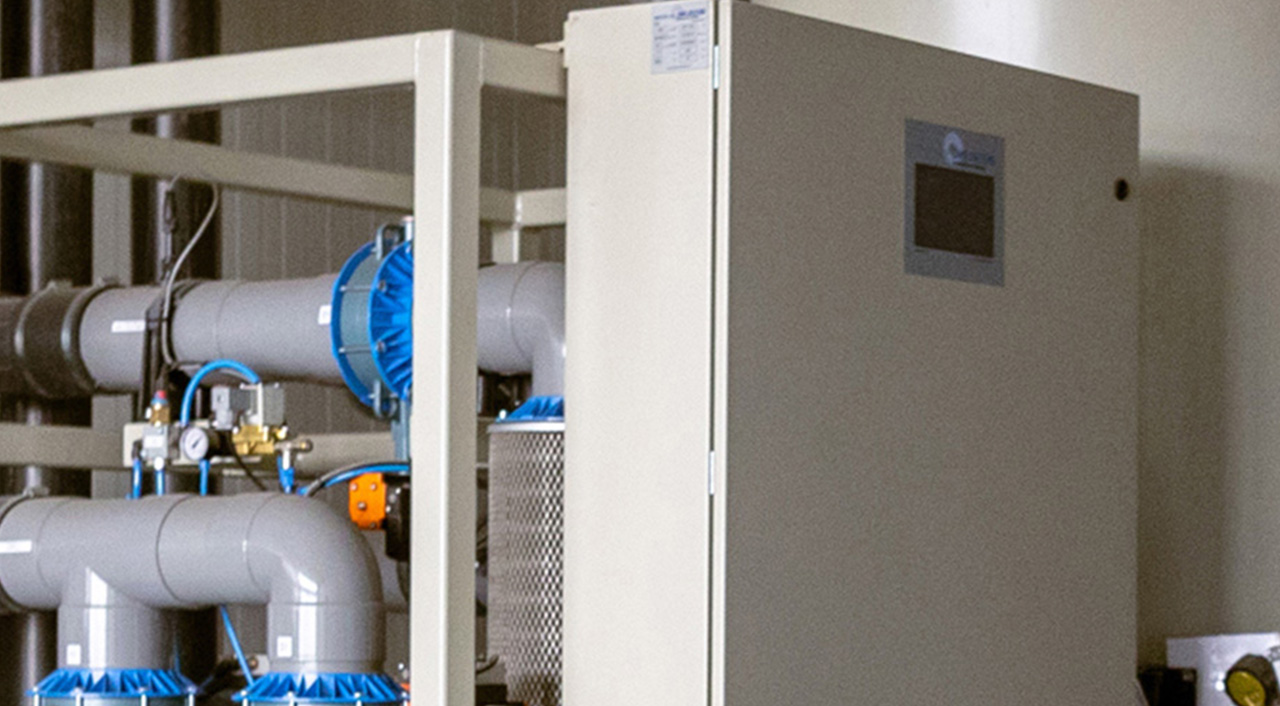
Maximizing Nitrogen Generator Performance: The Role of Real-Time Gas Purity Measurement
On-site high-purity nitrogen (N₂) generation is known to be an efficient, cost-effective, and sustainable alternative to traditional bottled or bulk gas supplies. Using a nitrogen generation system allows you to produce gas on demand, knowing its quality and pressure. This eliminates many of the drawbacks of traditional options, including high transport costs, the need for large on-site bulk storage silos, or the health and safety risks associated with handling gas bottles. It’s hardly surprising that the market for on-site nitrogen generators is growing strongly. Recent forecasts* predict an annual compound rate of growth of almost 6%, with the total global market expanding from 9.5 billion USD in 2024 to 16.5 billion USD by 2033.
For a nitrogen generator to reach optimum performance, it must be energy-efficient, produce exactly the purity of gas required, and function reliably with low maintenance costs. Achieving this goal depends on a variety of factors. One of the most important is precise real-time measurement of gas purity, as this has a direct correlation between system energy demands, confirms the quality of gas provided to downstream processes, and acts as an indicator of possible system faults.
Why Measure Oxygen in a Nitrogen Gas Stream
In a nitrogen gas stream, the measurement of oxygen (O₂) is normally used as an indication of purity. There are five key reasons for this:
1. Contaminant Detection: Oxygen is typically one of the most common contaminants in nitrogen gas streams. Measuring the concentration of O₂ allows you to assess the level of contamination directly.
2. Low Concentration Measurement: Oxygen sensors and analyzers are often highly sensitive and capable of detecting very low concentrations of O₂, making them suitable for ensuring high purity levels of N₂.
3.Cost and Practicality: Measuring O₂ concentration is usually more cost-effective and practical than measuring N₂ concentration directly. Most commercial gas analyzers are designed to detect O₂ because it is more reactive and detectable even at trace levels.
4.Measurement Sensitivity: In a high-purity N₂ gas stream, the nitrogen concentration is expected to be very high and stable. Oxygen (or other contaminants) will be in relatively low concentrations, making it easier to detect changes in purity by focusing on the contaminants rather than the major component.
5.Measurement Stability: Oxygen measurement is less likely to be affected by the presence of other gases, whereas measuring nitrogen directly can be complicated by the need to distinguish it from other inert gases like argon.
Maximizing a nitrogen generator’s operational performance requires continuous measurement of oxygen content in the nitrogen gas stream. This real-time gas purity measurement is not just about ensuring the nitrogen's quality but also plays a vital role in improving the overall efficiency of nitrogen generation. By closely monitoring oxygen levels, operators can fine-tune the generation process, identify and address inefficiencies, and ensure that the system operates at optimal performance. This proactive approach helps achieve high purity standards while reducing energy consumption and operational costs, ultimately enhancing the efficiency and quality of the nitrogen produced.
Improving Nitrogen Generation Efficiency and Quality
Improving the quality of nitrogen and the efficiency of its generation involves advancements in technology, processes, and methods. Here are seven key approaches:
1. Separation Technology Enhancements
2. Advanced Materials and Equipment
3. Process Optimization
4. Energy Efficiency Improvements
5. Sustainability and Environmental Considerations
6. Purification Technologies
7. Research and Development
Oxygen Analyzers for Measuring Nitrogen Gas Purity
Oxygen analyzers are a preferred option as they are commonly available at competitive costs. They can detect trace levels of gas as low as a few parts per million (ppm) using proven technology that is reliable, easy to calibrate, and produces consistent results over time.
However, not all oxygen analyzers and sensors are created equal. While different sensing technologies often enable different measurements and control performance, often the choice is decided by the knowledge, support, and capability of the manufacturer. This is often the vital make-or-break factor that leads to a successful relationship between supplier and OEM or end-user customers.
Process Sensing Technologies (PST) has been designing, developing, and supplying oxygen sensors and analyzers for over 30 years. PST has one of the widest choices of proven, high-performance products and provides an unrivalled combination of experience and application knowledge delivered through an international network of customer support centers.
Want to see more information like this?
Sign up to one of our Industry newsletters and you’ll receive our most-recent related news and insights all directly to your inbox!
Sign Up